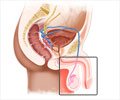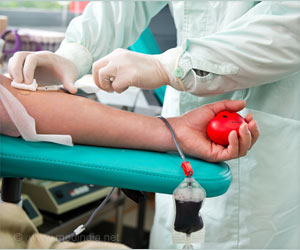Substance P levels in tear indicates poorer wound healing and increased susceptibility to corneal neurotrophic ulcers and neuropathy in diabetics.

- Substance P is a protein in the nerve cells of the eye and contributes to wound healing, provides nutrition to the cornea.
- Diabetics have low levels of substance P which //reflect damage to the corneal nerves.
- Substance P measurement could be a new and noninvasive test to assess the risk of neuropathy in diabetics.
Biomarker to Detect Diabetic Neuropathy
Tear samples from patients with diabetes show elevated levels of substance P, which are related to early damage to the corneal nerves, which may contribute to the development of corneal ulcers and poor wound healing in patients with diabetes, according to the pilot study by Maria Markoulli, PhD, MOptom, FAAO, and colleagues of University of New South Wales, Sydney, Australia. They researchers suggest that substance P measurement could be a new and noninvasive test to assess the risk of diabetic neuropathy.
Recent studies have shown that morphological changes in the corneal sub-basal nerve plexus correlate with changes in the peripheral nerves and may therefore be a good surrogate measure for diabetic peripheral neuropathy.
A 2015 study reported that in vivo confocal microscopy of corneal nerve fiber density (CNFD) can predict the onset of diabetic peripheral neuropathy in individuals with type 1 diabetes.
Substance P levels in the natural tear film in the eyes of nine adults with diabetes and a control group of 17 nondiabetic subjects were measured.
Unlike nerves elsewhere in the body, the structure of the living corneal nerve can be seen and measured using a technique called confocal microscopy. Studies have shown that corneal nerve fiber density, measured by confocal microscopy, can predict diabetes-related damage to the peripheral nerves, called peripheral neuropathy.
This common diabetes complication causes symptoms including pain and numbness of the hands and feet. Damage to the peripheral nerves can be seen on biopsy samples, but this is an invasive and nonrepeatable procedure.
Substance P Levels Indicate Damage To Corneal Nerves
Dr. Markoulli and colleagues sought to determine whether substance P levels in tears reflect damage to the corneal nerves in diabetic patients.
The results showed that patients with diabetes had substantially lower levels of substance P in tear film samples, compared to healthy controls.
On confocal microscopy, the diabetic patients also had a significantly lower corneal nerve fiber density, indicating loss of corneal nerve fibers. Substance P levels were "moderately" correlated with the corneal nerve fiber density measurements.
"The positive correlation between substance P and corneal nerve density indicates that substance P may be a potential biomarker for corneal nerve health," Dr. Markoulli and coauthors write.
In the eyes, reduced levels of substance P might contribute to poor wound healing and the development of corneal ulcers in patients with diabetes. That's consistent with recent studies reporting that substance P derivatives can promote healing of diabetes-related corneal defects.
In the future, measuring substance P levels in the tear film might become a useful, noninvasive test for assessing the risk of peripheral neuropathy in patients with diabetes. Dr. Markoulli and colleagues emphasize that further research is needed--including studies to confirm whether substance P reflects the presence or absence of peripheral neuropathy.
Reference
- Markoulli Maria et al., Corneal Nerve Morphology and Tear Film Substance P in Diabetes, Optometry and Vision Science (2017) doi: 10.1097/OPX.0000000000001096.
Source-Medindia















